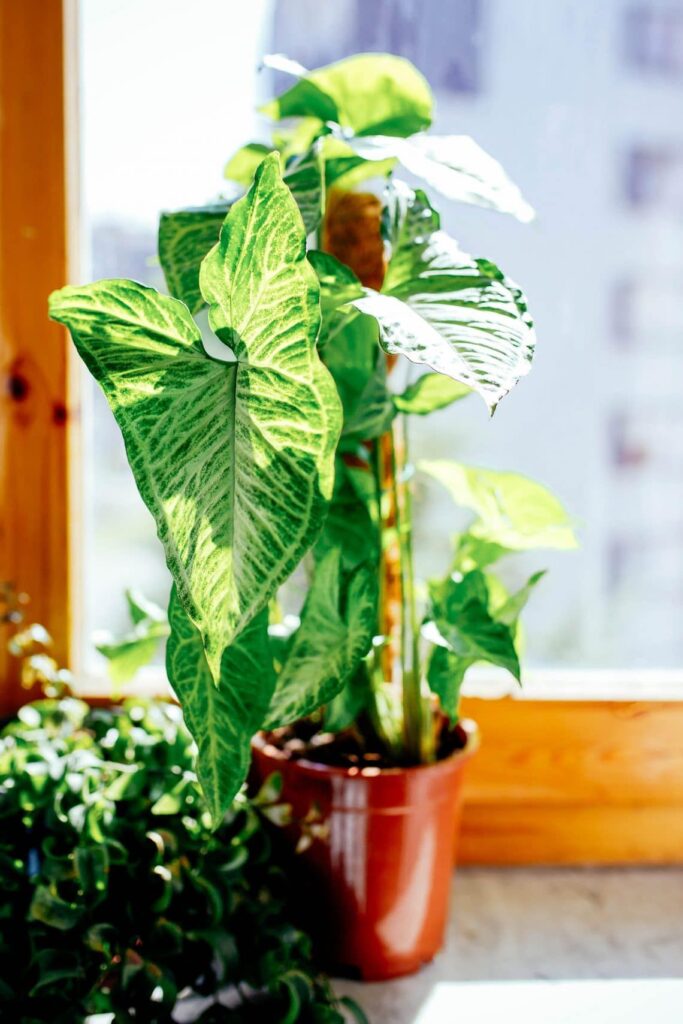Arrowhead Plant Care: A Comprehensive Guide
The arrowhead plant, also known as Syngonium and Nephthytis, is a popular indoor plant that is prized for its attractive foliage and ease of care. If you're looking to add this plant to your collection, this guide will provide you with all the information you need to keep it thriving.
Light Requirements
Arrowhead plants prefer bright, indirect light but can tolerate low light conditions. Avoid direct sunlight, as it can scorch the leaves. If the leaves begin to yellow, this is a sign that the plant is receiving too much light.
Watering
Arrowhead plants prefer evenly moist soil, but they should not be allowed to sit in water. Over-watering can lead to root rot, so be sure to allow the soil to dry out slightly between waterings. In low light conditions, the plant will need less water.

Humidity
Arrowhead plants prefer high humidity, so consider using a humidifier or placing a tray of water near the plant to increase humidity levels. They can also be misted regularly to provide extra humidity.
Soil
Arrowhead plants prefer a well-draining, peat-based potting mix. Be sure to use a pot with drainage holes to allow excess water to escape.
Fertilizing
Arrowhead plants should be fertilized monthly during the growing season (spring and summer) with a balanced, water-soluble fertilizer. During the dormant season (fall and winter), fertilization should be reduced or discontinued.
Pruning
So pruning arrowhead plants regularly will encourage bushier growth and prevent the plant from becoming too leggy. Pruning should be done after the plant has finished blooming and should be limited to

Propagation
Arrowhead plants can be easily propagated by division or stem cuttings. To propagate by division, simply remove the plant from its pot and gently separate the root ball into smaller sections. Each section should have several healthy roots and a good portion of leaves. Replant each section in its own pot, water well and keep in bright, indirect light.
To propagate by stem cuttings, cut a stem with a few leaves attached and place it in water or moist soil. New roots will form and the cutting will develop into a new plant.
Pests and Diseases
Arrowhead plants are relatively pest-free, but can be susceptible to mealybugs and spider mites. Regularly inspecting the plant and removing any pests you find will help prevent infestations. Over-watering can lead to root rot, so be sure to allow the soil to dry out slightly between waterings.
Conclusion
With proper care, the arrowhead plant can make a beautiful and low-maintenance addition to any indoor collection. Regular watering, fertilizing, pruning and monitoring for pests will keep your plant healthy and thriving for years to come.
